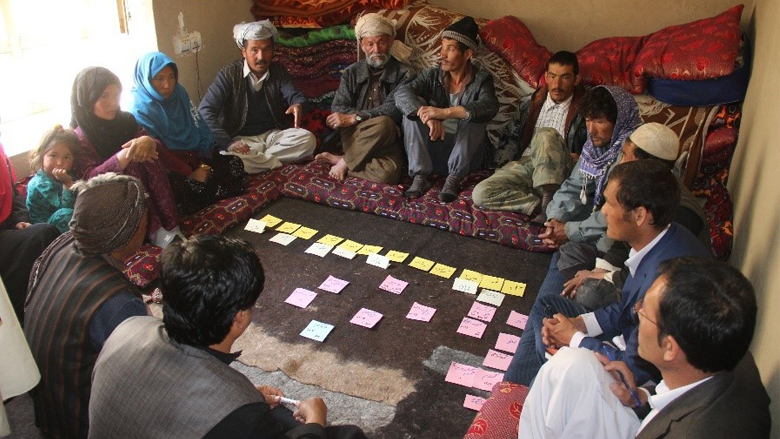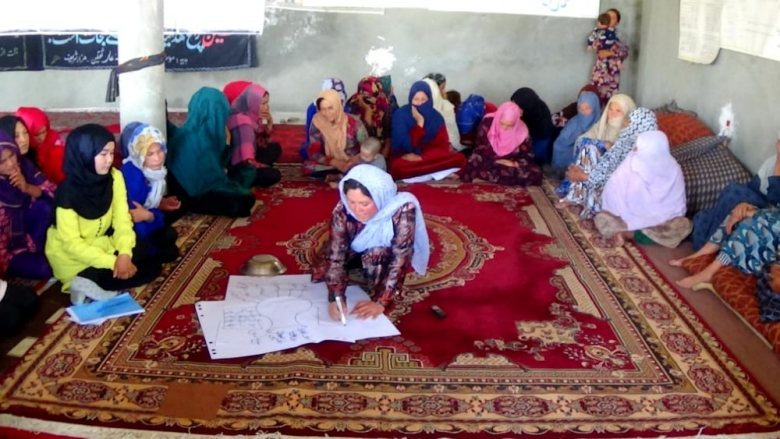Whereas traditional structures placed decision-making power in the hands of a community’s male elders, Half of CDC members in rural areas are women.
Recognizing that Afghanistan has suffered from chronic instability and conflict during its modern history, leaving the country’s economy and infrastructure in ruin, the government’s flagship development program, the Citizens’ Charter Afghanistan Project (CCAP) provides innovative pathways for communities, through the CDCs, to promote inclusive development on their own terms.
Using modern participatory development planning tools, the CDCs are developing multifaceted community development plans.
These exercises are meant to provide a nuanced understanding of each community’s economic and social relations from the bottom-up, with a focus on seasonal hunger, indebtedness, poor wages, lack of access to health services and education, among others. The sequential exercises and analyses not only emphasize understanding the key dimensions of poverty, but also how poor families experience poverty in each community.
Identifying Vulnerable Households
The Well-Being Analysis, for example, helps communities understand underlying socioeconomic dynamics.
During the analysis, participants systematically explore each household’s economic and social conditions, thereby promoting a greater understanding of the specific hardships that poor and very poor households face. Community members gather to sort and place all village households in a list from wealthiest to those with the lowest income to identify the community’s income distribution and socioeconomic needs.
A Succesful Example in the Salih Khan Community in the Kandahar Province
An example of the successful impact of this analysis is seen in the Salih Khan community in Kandahar province, where residents were initially reluctant to recognize the social and economic differences in their community.
According to the participants, there were no differences as community members stood together in times of need; however, following the Well-Being Analysis, participants realized the level of need of the “poor” and “very poor” households. The community further realized that government support was distributed evenly among all households, including those identified as “rich” and “middle income” through the Well-Being Analysis.
Based on this information, community members agreed to differentially invest future resources in the households identified as “poor” and “very poor.”
As a result, the analysis not only elucidates economic relationships between wealthier and poorer community members (e.g., taking loans or advance wages), but also provides important data for the government to identify vulnerable populations and target them for investment. In most communities, this is the first opportunity members have had to identify and understand the needs of these vulnerable populations with respect to their own position in the community.
Consequently,



